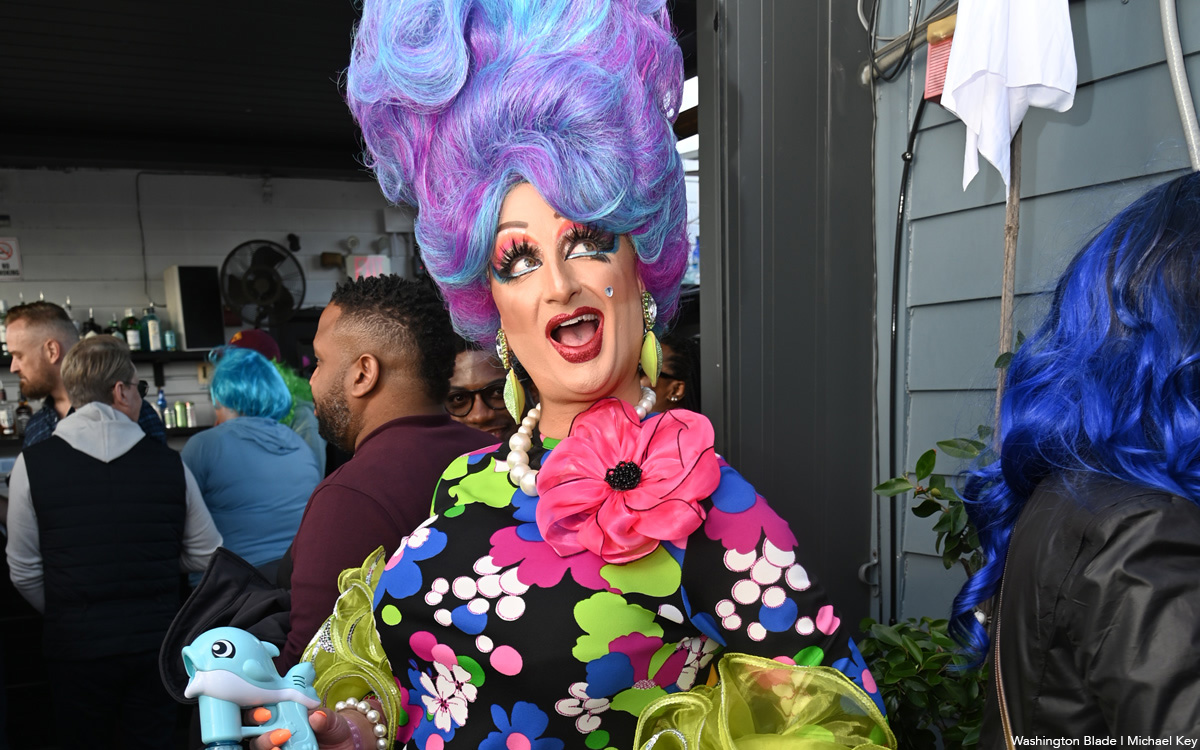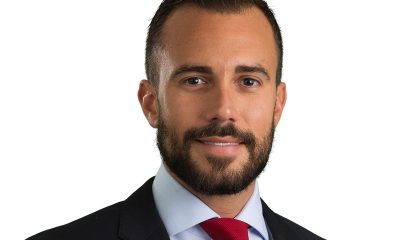Bars & Parties
Exploring the mysteries of Leonardo
Exhibit reveals a ‘superhuman’ artist, inventor
“His mind and personality seem to us superhuman, the man himself mysterious and remote.”
Thus wrote art historian Helen Gardner about the archetype of Renaissance Man, Leonardo da Vinci. But is there a mystery still about Leonardo’s sexual orientation?
This giant polymath of the High Renaissance — painter, sculptor, scientist, civil and military engineer, architect, mathematician, musician, anatomist, botanist and writer — appears to have no close relationships with women, except for one. He kept his private life indeed quite secret.
His sexual orientation has been the subject of analysis and speculation and even satire.
He has been thought by many, including Sigmund Freud, to have been gay, but Freud believed him to have merely been latent — gay-oriented but that those desires were unfulfilled.
Some have concluded that he was chastely gay, traumatically stung into sexless celibacy after a charge against him of sodomy with a male prostitute in 1476 when he was 24.
Or instead, as the art historian Kenneth Clark supposed, was Leonardo intimate with two of his pupils? One of them confided to Leonardo’s brothers after his death that the great man’s feelings for his young students were “sviscerato et ardentissimo” (“deeply felt and most ardent love”).
And then there are Leonardo’s private, erotic drawings of one of those pupils, also his ward, the notorious boy known by his well-deserved nickname “Salai” (the little unclean one), who came to live with Leonardo when he was a 10-year-old in 1490 when the painter was 38, and lived with him for 30 more years. Other paintings, especially “John the Baptist” and “Bacchus,” depict androgyny and homoeroticism.
An exhibit at the National Geographic Museum, “Da Vinci – the Genius,” which closes there on Sept. 12, should help to sweep away some of the mysteries surrounding da Vinci, the man who was perhaps the most diversely talented person ever to have lived, whose unquenchable curiosity was equaled only by his vast powers of invention.
The exhibit, which concentrates on his scientific and engineering side as much as his artistic scope, illustrates the point made by the historian Marco Resci who declared of Leonardo that his vision of the world was cooly rational and empirical and not mysterious at all.
For example, in the National Geographic exhibit, which offers a stunning catalogue of the range of da Vinci’s epic genius, consider the section on flight, summed up by Leonardo himself in these words: “There shall be wings! If the accomplishment be not for me, t’is for some other.” For Leonardo was the first to look at the science of flight and in the process to create the engineering of aeronautics.
Leonardo began this study working on the design for flying machines based on wing movements he observed closely by analyzing the flight patterns of birds and bats and dissecting them to study the anatomy of their wings. Later, however, he realized that humans — with less than a quarter of their weight in their arms and chest muscles — would simply never have the strength to fly like birds.
So he began instead to investigate flight without wing movement, by careful study of wind velocity and ways to use air currents to reach great heights. And his ideas, sketched in his many notebooks using his striking mirror-image cursive (being left handed, it was easier for him to write from right to left), foreshadow the use of gliders, airplanes and helicopters and also parachutes of today.
The genius of the National Geographic Exhibit is how it demonstrates the full scope of Leonardo’s genius. It is a comprehensive traveling presentation that required more than a decade to complete and features a vast array of full-scale machine inventions built according to his personal “codices” (or notebooks). It also includes reproductions of his most famous paintings, including the “Mona Lisa.”
To understand the mystery and the genius of Leonardo da Vinci, this is an opportunity not to be missed.

“Herses- Purse Frist Extravaganza” will be on Friday, May 3 at 9 p.m. at 1835 14th St. N.W. This will be an evening of dancing and performances, hosted by HAUS of Bambi Award-winning Performance Artist, BUMPER. Refreshments are also available for purchase.
Tickets are $10 and can be purchased on Eventbrite.

El Techo will host, in partnership with Cherry Fund, a special edition of “Cherry Sundays” on Sunday, April 7 at 11 a.m.
This event is a one-day fundraising bottomless brunch. There will be performances by Evry Pleasure, Tara Hoot and TrevHER, with DJ Lemz. All tequila shot purchases will be donated to the Cherry Fund.
The Cherry Fund raises money for LGBTQ non-profits whose primary goal is to stop the spread of HIV/AIDS with prevention, treatment and education, and mental health services.
The event costs $45, inclusive of bottomless brunch on margaritas, mimosas, Bloody Marys and Tecates.

Mid-Atlantic Leather Weekend arrives next week with a kickoff event Thursday, Jan. 11 from 10 p.m.-3 a.m. at Bunker. Organizers at Kinetic promise a surprise drill sergeant who will whip you into shape. Joshua Ruiz DJs the event. This event is for VIP pass holders only; visit kineticpresents.com for details.














